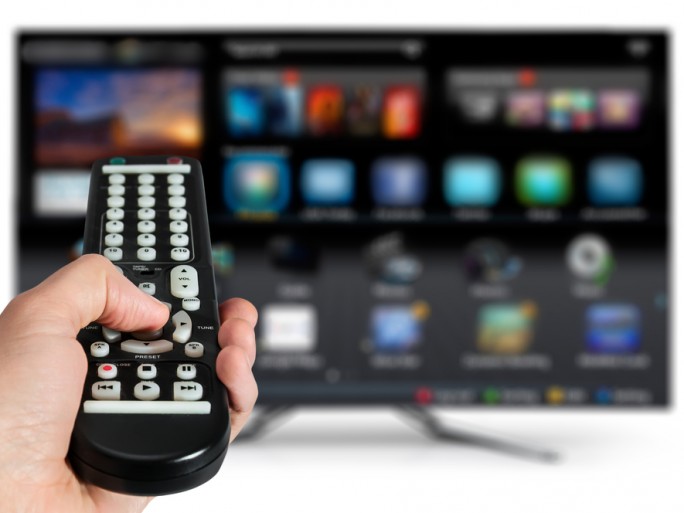At800: ‘Reactive’ Strategy To Freeview 4G Interference Is Working

at800 CEO Ben Roome tells TechWeekEurope it is satisfied how the last 12 months have gone
At800, the organisation responsible for ensuring Freeview TV viewers receive no disruption from 4G services at 800MHz, says the first 12 months of its reactive approach has been a success, with nine out of ten viewers who received support rating it as “excellent.”
Last January, at800 switched from a proactive strategy of mass mail outs of postcards and aerial filters to a more targeted approach that would see an engineer sent out if viewers felt their Digital Terrestrial Television (DTT) signal had been impacted by 4G.
Notices are only sent out when the mobile operators notify at800 that a mast is going up, reducing any potential panic, and an engineer aims to fix the problem first time. In total 15,000 engineer visits have been made over the past year, less than half of which identified a problem related to 4G.
800MHz expansion
 “This is a lot more engineer visits but gives us a better idea about the issues people face trying to get good television reception,” at800 CEO Ben Roome told TechWeekEurope. “We try to help them with simple fixes even if there isn’t a 4G issue.”
“This is a lot more engineer visits but gives us a better idea about the issues people face trying to get good television reception,” at800 CEO Ben Roome told TechWeekEurope. “We try to help them with simple fixes even if there isn’t a 4G issue.”
The most common causes for Freeview interference, according to at800, are unnecessary or faulty television signal amplifiers or signals that are too strong following the switch off analogue television.
When at800 changed its strategy, just 15 locations in the UK could receive LTE services at 800MHz. Coverage has since expanded and more operators are now using their lower frequencies. However Roome hasn’t seen any major changes.
“I don’t think we’ve seen anything statistically significant,” he said. “The rate of interference per mast has not changed since the programme has rolled out.”
Targeted approach
It was originally thought that up to 900,000 households could be affected by LTE using low frequencies. At800 hasn’t revised this figure but expects the final total to be much lower. To date, more than one million free filters and nearly 15 million postcards have been sent out to properties thought to be at risk.
In addition to postcards, at800 has been communicating through the local press and social media, with adverts appearing on the Facebook and Twitter feeds of users in potentially affected areas. The body only sends out notifications if the likelihood of impact is greater than five precent
Roome said that although people who might need assistance the most may not be on social media, a friend or relative might be able to pass on a message that might be more trusted than a postcard through the letterbox. So far, 221,601 calls have been made to the at800 contact centre and 5,502 enquires managed through social media.
Wasted filters?
 Anyone who needs a filter for their personal use can get one for free from at800, but despite all of these efforts to reach out to the public, aerial filters are still available in some retailers. Does Roome see this as evidence that at800’s message isn’t getting through to some people?
Anyone who needs a filter for their personal use can get one for free from at800, but despite all of these efforts to reach out to the public, aerial filters are still available in some retailers. Does Roome see this as evidence that at800’s message isn’t getting through to some people?
“I think that’s evidence of a free market,” he said. “We do try and communicate clearly to consumers they can get a filter for their own personal use.
“What we also do is if people come and say they legitimately didn’t know about us and had some independent work done, we will give a contribution.”
Of course many of the one million filter sent out during the proactive stage of at800’s campaign may never serve a purpose and are just lying idle in many people’s homes. At800 accepts there may be a future electronic waste issue but says it won’t seriously consider a recycling programme until its remit is over. The organisation will remain active until at least a year after O2 completes its obligation to provide 4G to at least 98 percent of the UK population.
“We have a number of filters left and we have looked at how we could recycle them appropriately,” he explained. “These are devices that sit passively behind DTT equipment but might protect against future deployments.”
Future plans
O2 isn’t expected to reach that target until at least 2017, meaning at800 will be around for a few more years yet.
Roome said it will continue to adapt its approach, providing social training to its engineers to complement the technical skills they already have. However another priority is to simplify how Freeview viewers can receive support for reception issues and other problems, especially given there might be another digital switchover in the near future to accommodate mobile services on 700MHz.
“One of our concerns is that the support landscape for people who just want to watch DTT can be a little bit complicated,” he said, citing the various bodies that handle complaints. “We would look at how that could be standardised.”
Are you up to speed on 4G? Try our quiz!